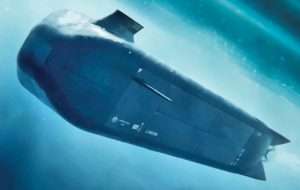Submarine cables and other underwater infrastructure such as oil and gas pipelines are increasingly vulnerable. This vulnerability stems from fierce international competition for dominance in this field and a rise in attacks targeting these cables. Recent incidents have highlighted how submarine cables have become a critical weakness in the global economy. The nature and scale of underwater infrastructure make it challenging to provide adequate protection, making them a primary target for grey zone conflicts involving deniable attacks that do not escalate to full-scale wars.
The ongoing Russian-Ukrainian war and its repercussions in the Baltic Sea, the North Sea, and the Black Sea, as well as the persistent Houthi attacks in the Red Sea, raise many questions about the future of underwater warfare and how these conflicts will be conducted. Moreover, the increasing targeting of maritime infrastructure reflects submarine infrastructure’s significant role in the current global security landscape and its influence on future naval warfare.
The Evolution of Submarine Cable Importance
Submarine cables are crafted from optical fibres made of silica glass, which are incredibly thin and coated with layers of plastic or steel for insulation and protection. The installation of these cables in the depths of the sea dates back to the 1850s, with the SS Great Eastern laying the first transatlantic cable. These cables were primarily used to serve the colonial objectives of major empires. To manage the technical complexities associated with these cables, the International Telegraph Union (ITU) was established in 1865. Now known as the International Telecommunication Union, it took several steps to protect submarine cables, including the 1884 Convention for the Protection of Submarine Telegraph Cables. However, these cables remained contentious among nations, with no consensus on protective measures during wartime.
In 1982, the United Nations Convention on the Law of the Sea (UNCLOS) was signed, complementing the ITU by safeguarding the freedom of companies to lay submarine cables and pipelines in international waters. However, the United States has yet to sign this agreement, and both the US and China have national laws that conflict with some provisions of UNCLOS.
Moreover, the diverse and multi-faceted network of actors involved in submarine cables adds another layer of complexity to the ITU’s coordination efforts. In the absence of a robust regulatory environment ensuring the protection of submarine cables, risks associated with the internet and the intensification of conflicts in geostrategic locations, such as the South China Sea, continue to rise.
Today, submarine cables are crucial globally, forming one of the world’s most vital digital infrastructures. Over 95% of transcontinental communications rely on these cables, which are essential not only for the internet but also for various financial transactions and bank transfers. Many defence departments also heavily depend on these submarine cables. It is estimated that around $10 trillion in financial transactions occur annually through over 950,000 kilometres of submarine optical cables. Any damage to these cables can lead to widespread internet outages and significant economic disruptions.

Dimensions of Submarine Cable Wars
Cable wars are not a new phenomenon with historical instances including Britain’s targeting of German telegraph cables during World War I, and the “Ivy Bells” operation by the US Navy during the Cold War to tap into Soviet cables. However, the current international system has made modern cable wars quite different from traditional forms. The world is now more interconnected than ever, relying heavily on underwater infrastructure for energy, natural gas, oil, and the internet. Consequently, any attack on this infrastructure in one country can have repercussions for others.
Traditionally, submarine warfare focused on conflicts between submarines. However, the development of unmanned underwater vehicles and mine countermeasure operations, coupled with the growing need to protect underwater infrastructure, especially cables, has significantly altered the nature of these wars.
Recent studies have begun to explore the concept of submarine cable warfare, highlighting two primary dimensions. The first is the intense competition between the United States and China, with each side striving for dominance in this field. Some estimates suggest that this geopolitical competition could fragment the global internet infrastructure, leading to a cold war beneath the waves. The second dimension involves the rising threats targeting these cables in recent times. These two dimensions can be outlined as follows:
1. A New Undersea Cold War: Historically, government telecommunications companies were the primary investors in submarine cable infrastructure. However, this has changed significantly over the past decade, with major US tech companies such as Google, Microsoft, and Meta investing heavily in this sector. Between 2016 and 2022, these investments totalled around $2 billion, accounting for 15% of global investments in submarine cables. This figure is expected to increase by an additional $3.9 billion over the next three years, representing 35% of global investments in this sector.
This shift aligns with the Chinese Communist Party’s belief that achieving dominance involves controlling the information superhighway. Submarine internet cables have become the new nerve centre for military and commercial power in the current international system. This explains Beijing’s launch of the Digital Silk Road in 2015, which included massive investments in submarine cables to establish China’s dominance in the digital realm, develop its capabilities, and end Western control over this domain. This initiative forms a significant aspect of the current submarine cable wars.
Huawei Marine acquired approximately 15% of the global submarine cable market in 2019 before facing stringent US sanctions, leading to the acquisition of Huawei Marine by China’s submarine cable company, rebranded as HMN Tech which has since been pursuing significant contracts in the submarine cable industry.
In response to China’s actions, the United States has imposed various restrictions on Chinese companies, attempting to exclude them from major deals. In February 2023, the US-based SubCom secured a $600 million contract for a new submarine cable project after Washington pressured telecom companies not to support the Chinese bid. The US Department of Justice’s telecommunications team continues to work diligently to prevent Chinese companies from securing contracts or laying cables directly between the US and China.
The US launched the “Clean Network Initiative” in 2020 to attract Washington’s allies away from Chinese projects and prevent Chinese companies from becoming key players in the submarine cable market. Currently, China provides about 10% of the world’s submarine cables. In 2021, US pressure persuaded the World Bank to cancel a submarine cable project that was supposed to connect three Pacific island nations to avoid awarding the contract to HMN Tech. In March 2023, the US Congress passed a law to control submarine cables, ensuring continued American superiority in this field.
Meanwhile, Western reports in April 2023 revealed current Chinese efforts to map one of the world’s most advanced submarine cable networks, the EMA project, which aims to connect China to Europe via Singapore, Pakistan, Saudi Arabia, Egypt, and France. This project competes with the American SubCom’s “SeaMeWe-6” project. The construction of two competing submarine cable networks linking Asia and Europe signals a significant trend toward sharp polarization in global internet infrastructure, including submarine cables, data centres, and phone networks. This development fosters a less connected international system and pushes toward an underwater Cold War between the Eastern and Western blocs.
Despite US efforts to impede Chinese advancements in the global submarine cable market, Chinese companies have continued to build international cables for Beijing and many of its allied nations in Asia, Africa, and Latin America. Numerous Chinese ships are currently involved in complex repair operations for optical fibres, even those owned by the United States, complicating Washington’s efforts to exclude Chinese companies from the backbone of the global internet.
2. Increasing Attacks on Submarine Cables: Submarine infrastructure has become a part of grey zone conflicts. Recent years have seen an marked increase in deliberate and accidental attacks on submarine cables. For instance, several cables were cut off the coast of southern France in April and October 2022, affecting major cables in Asia, Europe, and the US. Natural phenomena also cause damage, such as the destruction of submarine cables in Tonga in the South Pacific after a volcanic eruption in January 2022.
In February 2023, Chinese ships cut two submarine cables belonging to Taiwan’s Matsu Islands. Although the backup microwave transmission system remained operational, communications were extremely slow, reflecting the crucial role of submarine cables given the heavy reliance on the internet by advanced economies.
In February 2024, internet connectivity in parts of Asia, Africa, and Europe suddenly slowed due to damage to three submarine cables in the Red Sea.
The Red Sea is a critical chokepoint for internet and communications, with around 90% of communications between Europe and Asia passing through it, and 17% of global internet traffic passing through submarine cables in the Bab el-Mandeb Strait.
Although there have been no direct Houthi attacks on submarine cables in the Red Sea, some US reports suggest indirect involvement, such as the cutting of some submarine cables in February 2024 by the anchor of the British ship “Rubymar” after it was hit by a Houthi missile.
In addition to submarine communications and internet cables, some attacks target other underwater infrastructure, such as gas and oil pipelines. Notable incidents include the attacks on the Nord Stream pipelines and the Baltic connector pipeline linking Finland and Estonia in 2023.
Amidst the ongoing Ukrainian war, several international reports have warned of the potential danger to submarine cables in the Black Sea. Increased maritime activity in the region could lead to the accidental cutting of submarine cables by ships, in addition to accusations between international powers of deliberately targeting these cables amidst the current sharp conflicts between Russia and the West.

Increasing International Interest in Undersea Cable Wars
There is growing international concern about the future of undersea cable wars and their potential outcomes in shaping future underwater conflicts.
Despite the Houthis not having carried out actual attacks on submarine cables so far, which can be mainly attributed to their relative technological backwardness and lack of submarines capable of reaching the cables, we can’t rule out the possibility that the Houthis will develop their maritime tactics to enhance their ability to target underwater infrastructure.
This possibility is amplified by the fact that the gulf has shallow waters only about 100 metres deep, thus there is no need for high-tech submarines.
The attacks on the Nord Stream gas pipelines in the Baltic Sea in September 2022 have raised many international concerns about the possibility that the coming years will witness more targeting of the vast underwater infrastructure in Europe, which could result in potential modifications and sabotage.
Russia is particularly invested in enhancing its underwater offensive capabilities and currently possesses a large fleet of nuclear submarines capable of carrying smaller nuclear submarines. On the other hand, some Western reports have highlighted a major issue regarding the outcomes of the new Cold War between the United States and China, which is expected to extend underwater.
This will have direct repercussions on future undersea cable wars by dividing the internet into two competing systems. The separation of the United States and China in the field of information will have negative implications for global trade, online banking, and global economic tools.
Additionally, some Western reports suggest that any potential Chinese attack on Taiwan in the future may threaten the underwater infrastructure. Given the limited internet cables connecting Taiwan to the outside world, including the United States, targeting these cables could partially isolate the island and make coordination operations more difficult.
Why Are Submarine cables Still Weak Targets in Future Wars?
Western reports have revealed that more than 70% of undersea cable faults occur unintentionally, whether due to anchors, fishing nets, weather factors, shark bites, or sunken ships, which have recently become one of the threats to these cables.
This makes it difficult to distinguish between accidents and attacks, therefore increasing ambiguity and making it easier for attackers to evade responsibility.
Another weakness associated with submarine cables is the ease of locating these cables and pipelines, as companies disclose their locations to reduce maritime accidents.
Thus, the ambiguity dominating these environments makes underwater infrastructure attractive targets for hybrid wars. This situation grows more dangerous given the ease of targeting this infrastructure and the ability of any country, even a small one, as well as non-state actors, to pose a direct threat to it. At the same time, it is difficult to prove intentionality, even if the perpetrator is known.
Monitoring submarine cables is not an easy task. The length of these cables could extend around the world 30 times if laid in a straight line, and some of these cables lie at great depths, reaching up to 8,000 metres. This poses a significant challenge for operations at these depths, as demonstrated by the explosion of the experimental submarine “Titan” at a depth of 3,500 metres in mid-2023. In conclusion, in light of the increasing threats to submarine cables and their transformation into a dimension of current underwater wars, international governments can work on enhancing resilience to secure underwater infrastructure and deter any aggression in the grey zone.
This can be achieved by building more resilient systems for new projects from the start. Additionally, a short-term solution could be to enhance maritime awareness. The likelihood of hostile entities targeting submarine cables could decrease if they realise they are being monitored, which requires more sensors, such as satellite imaging, and sensors on ships and marine vehicles, especially given the significant advances in artificial intelligence and quantum computing.
Thus, it is critical to enhance coordination between the public and private sectors to build resilient systems and increase maritime awareness. ●
By: Adnan Mousa (Assistant Professor at the Faculty of Economics and Political Science, Cairo University)




















